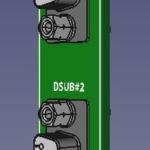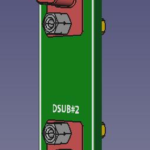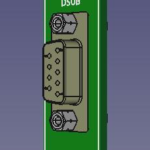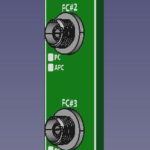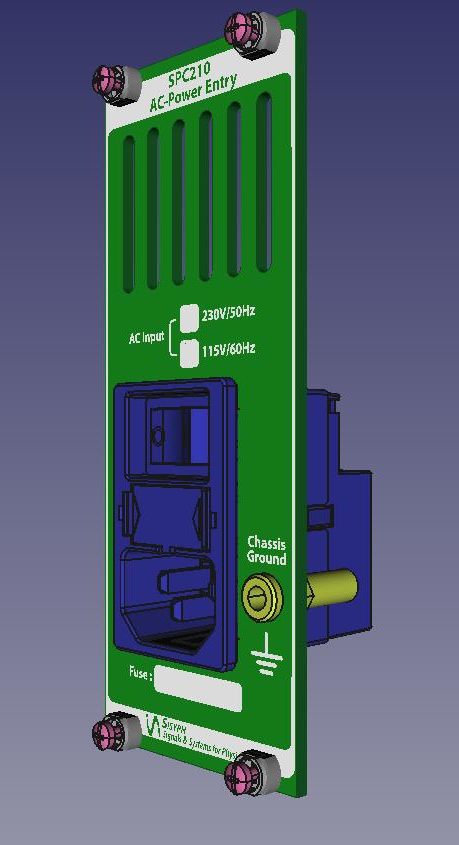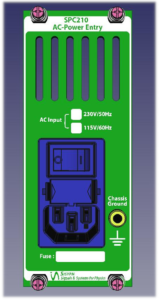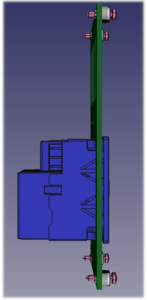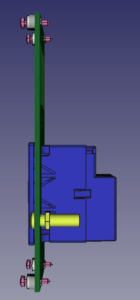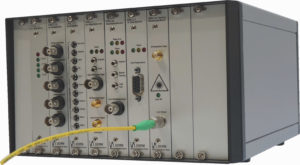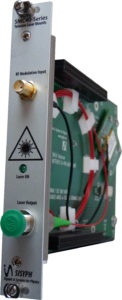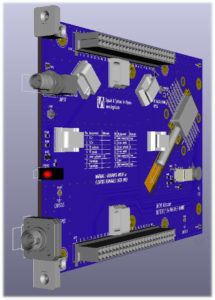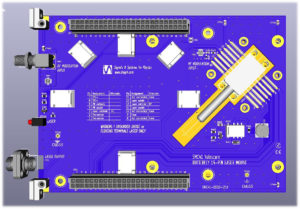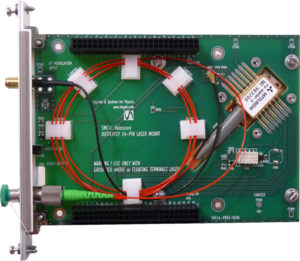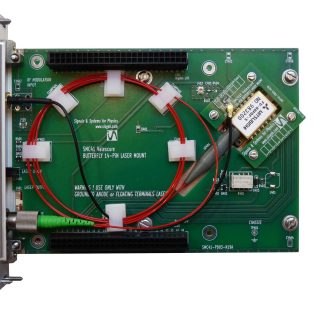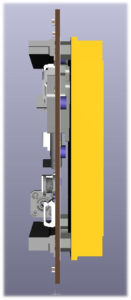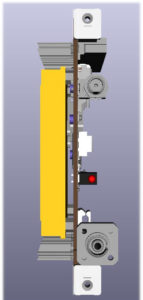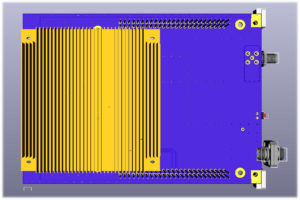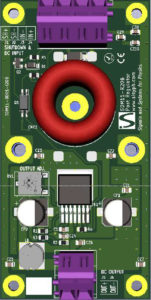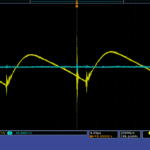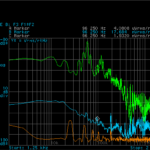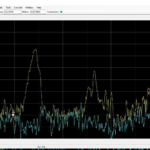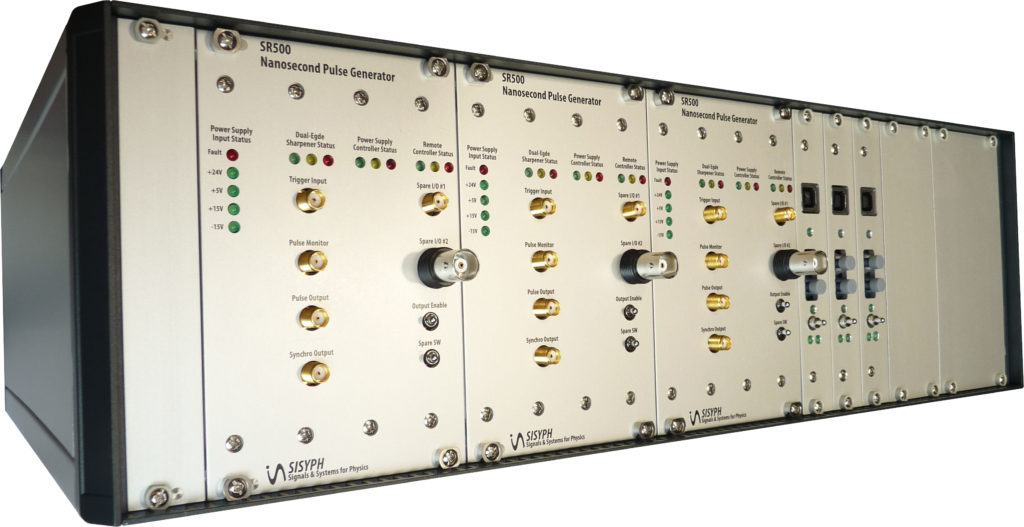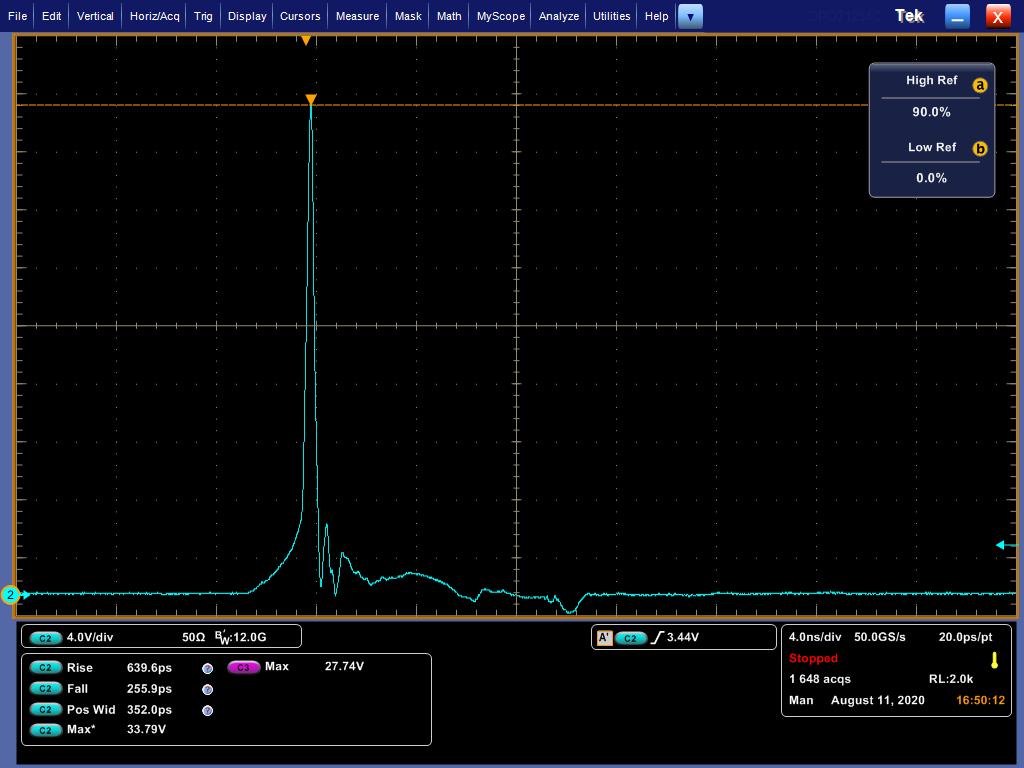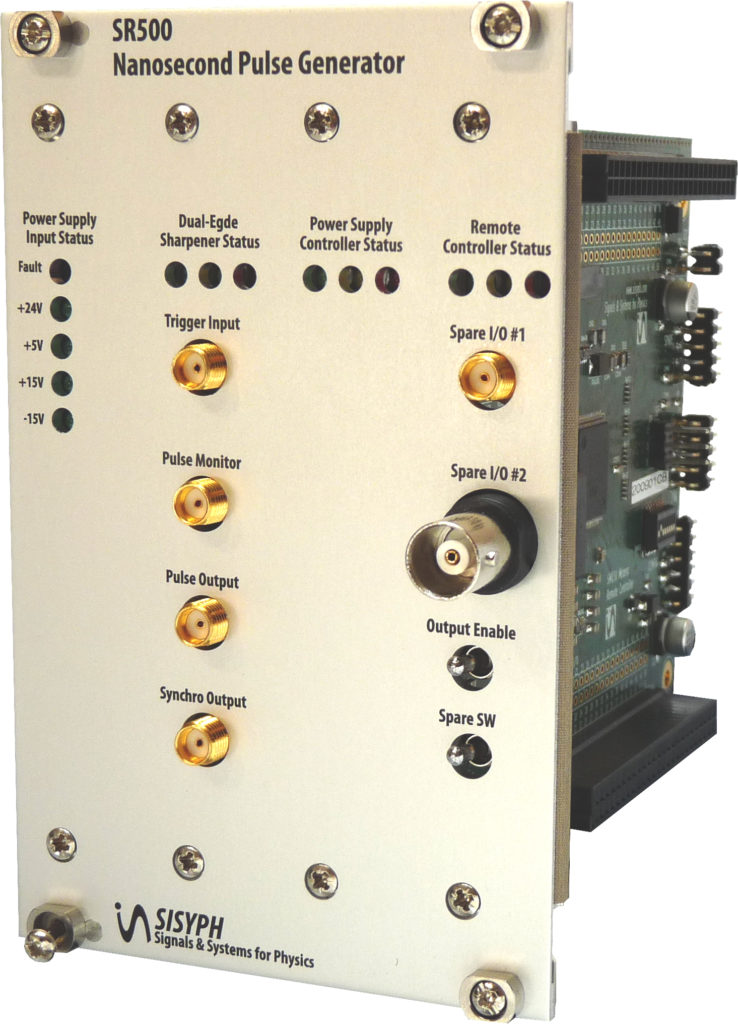The SMC41 Valescure module has been designed to mount low-power telecom laser diode packaged in a butterfly 14-pin case. Since this module is intended to be stacked on the SMC11 Ultra-Low Noise Current source, no cable is required to connect the laser to the current controller.
The laser package can be soldered directly on the board but solderless connection is also possible using the dedicated mount flange. The RF modulation is allowed regardless the mounting option. The mounted laser is protected using a relay contact shorting the laser terminals in shutdown mode or when the module is removed from the stack.
A 6-K/W heatsink, located on the bottopm side of the module, is able to remove dissipated for most of low-power lasers. The laser case is fixed on this heatsink using a high-conductivity thermal pad and M2 screws (4x).
The optical fiber is retained on the board using clamps to form a reel compatible with its minimum bend radius. An FC/APC to FC/APC connector is located on the front panel to connect the laser plug to the user cord.

